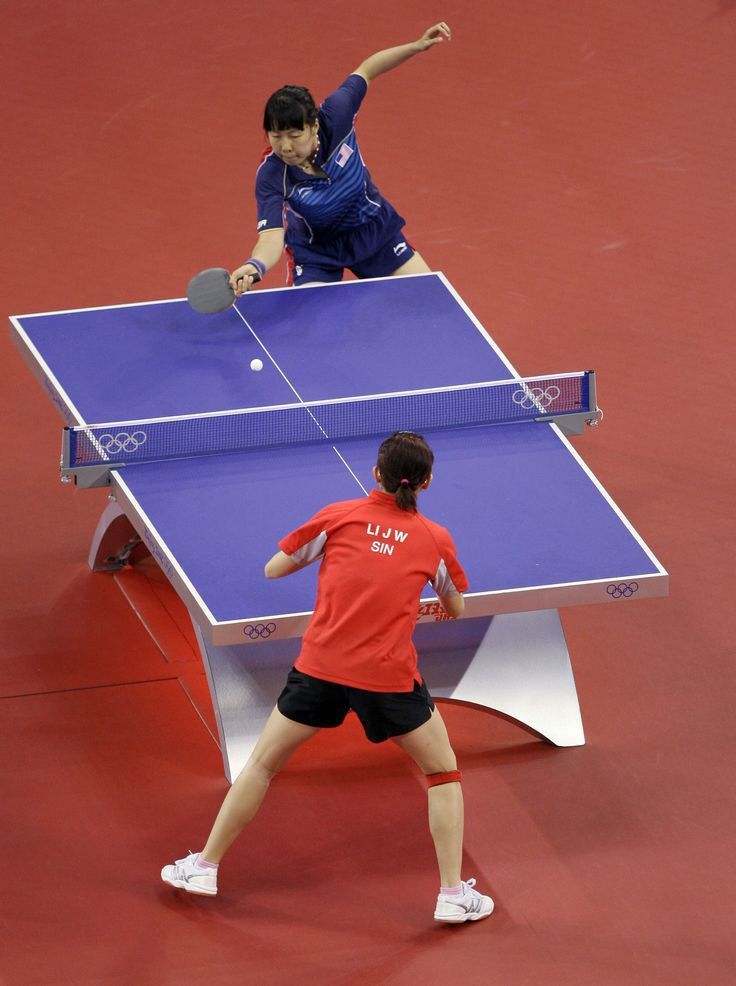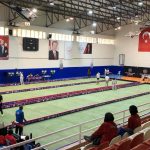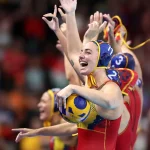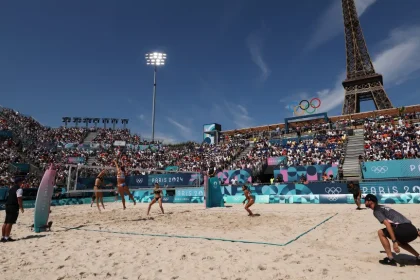Table tennis, also known as ping pong, is a fast-paced indoor sport played on a rectangular table divided by a net. Two or four players use small paddles (rackets) to hit a lightweight, hollow ball back and forth, aiming to score points by landing the ball on the opponent’s side in a way that they cannot return it. The game emphasizes speed, reflexes, spin, and strategy. Matches are typically played to 11 points, with players alternating serves every two points, and a player must win by at least two points.
Key features:
- Equipment: Paddle, 40mm ball, 2.74m x 1.525m table, 15.25cm net.
- Rules: Players must allow the ball to bounce once on their side before returning it, and the ball must clear the net and land on the opponent’s side.
- Skills: Emphasizes speed, spin, precision, reflexes, and strategy.
Why is Table Tennis Popular in the Global Sports Market?
Table tennis enjoys widespread popularity due to several factors:
- Accessibility:
- Low cost: Requires minimal equipment (a table, paddles, and a ball), making it affordable for individuals and communities.
- Space efficiency: Can be played in small indoor spaces, unlike sports requiring large fields.
- Inclusivity: Suitable for all ages, genders, and skill levels, from casual play to professional competition. It’s also a prominent Paralympic sport.
- Global Reach:
- Cultural significance: Particularly dominant in East Asia (e.g., China, Japan, South Korea), where it’s a national sport. China alone has millions of recreational and competitive players.
- Universal appeal: Played in over 226 countries, with 875,000 registered players globally (ITTF data, 2023).
- Entertainment Value:
- Fast-paced action: Matches are dynamic, with rapid rallies and skillful spin techniques (topspin, backspin, sidespin).
- Spectator-friendly: Easy to follow, with professional matches broadcast globally, boosted by platforms like YouTube and streaming services.
- Health Benefits:
- Improves hand-eye coordination, reflexes, and cardiovascular fitness.
- Low injury risk compared to contact sports, appealing to young and older players.
- Olympic and Professional Appeal:
- An Olympic sport since 1988, increasing its global visibility.
- Professional circuits and prize money (e.g., ITTF World Tour) attract top talent.
Important Global Table Tennis Events
- Olympic Games:
- Held every four years (e.g., Paris 2024, Los Angeles 2028).
- Events: Men’s and women’s singles, doubles, mixed doubles, and team events.
- Dominated by China, with occasional breakthroughs by countries like Japan, Germany, and South Korea.
- World Table Tennis Championships:
- Annual event organized by ITTF.
- Categories: Singles, doubles, mixed doubles, and team competitions.
- Recent example: 2023 Championships in Durban, South Africa.
- Professional circuit launched by ITTF in 2021.
- Includes WTT Grand Smash (highest tier, $2M prize pools), WTT Cup Finals, and WTT Contender events.
- 2025 events: WTT Grand Smash in Singapore, WTT Champions in China.
- Asian Table Tennis Championships:
- Major regional event, given Asia’s dominance (China, Japan, South Korea).
- Held biennially, with 2024 event in Kazakhstan.
- Paralympic Games:
- Features categories for athletes with physical disabilities, divided by impairment levels (e.g., wheelchair, standing).
- Paris 2024 saw strong participation from China, France, and Australia.
- Youth and Junior Championships:
- ITTF World Youth Championships (U19, U15) nurture young talent.
- Example: 2024 event in Sweden.
How Can an Athlete (Young or Old) Take Part in Table Tennis Globally?
- Getting Started:
- Learn the basics: Join a local club, school program, or community center. Many offer beginner coaching.
- Equipment: Purchase an affordable paddle (e.g., $20–$50 for beginners) and access a table at a club or public facility.
- Training: Focus on grip (shakehand or penhold), stance, and basic strokes (forehand, backhand, serve). Online tutorials (e.g., ITTF YouTube) or apps like Pongfinity can help.
- Local and Regional Competitions:
- Clubs and leagues: Join a local table tennis club affiliated with the national federation (e.g., USA Table Tennis, England Table Tennis).
- Tournaments: Enter amateur or age-group tournaments (e.g., U.S. Open, regional championships). Many countries host “open” events for all skill levels.
- School programs: For youth, school or university leagues are common entry points.
- Path to Professional/Competitive Play:
- National rankings: Compete in national tournaments to earn ranking points. Top players are scouted for national teams.
- ITTF events: Qualify for international events like WTT Contender or Youth Championships through national federations.
- Coaching: Work with certified coaches to master advanced techniques (e.g., spin serves, looping). Many countries offer training camps (e.g., China’s national training centers).
- Sponsorships: Top players may secure sponsors for equipment and travel (e.g., Butterfly, Stiga).
- For Older Athletes:
- Veterans’ events: ITTF hosts World Veterans Championships for players over 40, with age categories (40+, 50+, etc.).
- Recreational leagues: Many clubs offer senior or masters’ leagues for casual or semi-competitive play.
- Paralympic pathway: Athletes with disabilities can join adaptive programs through national Paralympic committees.
- Global Participation:
- Join the ITTF network: Register with your national federation, which connects to ITTF for international opportunities.
- Qualification: For major events like the Olympics or World Championships, athletes must meet ITTF criteria (e.g., world ranking, national selection).
- Amateur global events: Events like the World Table Tennis Day (April 23) or ITTF World Hopes Week encourage grassroots participation.
- Resources and Support:
- ITTF website: Offers event calendars, rules, and coaching resources (ittf.com).
- National federations: Provide tournament schedules and coaching programs (e.g., USATT.org, TableTennisEngland.co.uk).
- Online communities: Platforms like Reddit (r/tabletennis) or X posts from @WTTGlobal share tips and updates.
Additional Notes
- China’s dominance: China has won 28 of 32 Olympic table tennis golds since 1988, making it a benchmark for aspiring athletes.
- Emerging nations: Countries like India, Nigeria, and Brazil are growing in competitiveness, expanding the sport’s global footprint.
- Technology: Tools like ball-tracking systems and AI-based training apps are enhancing coaching and fan engagement.
For young athletes, starting early (ages 6–10) and joining a structured program is ideal. Older athletes can still compete recreationally or in veterans’ categories, with many finding success later in life (e.g., 50+ world champions). To stay updated, follow ITTF or WTT on X (@WTTGlobal) or check grok.com for real-time event info.


















